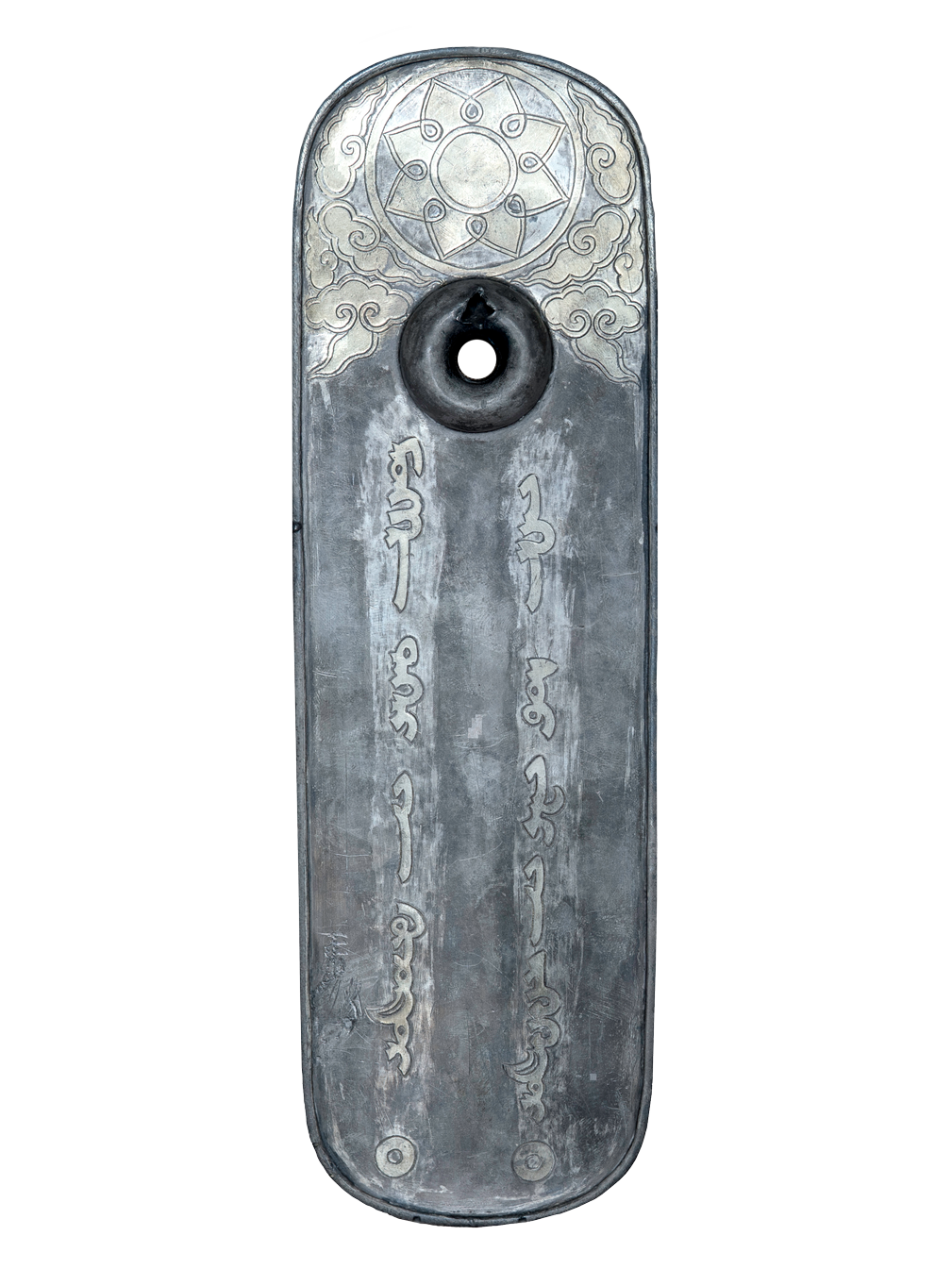Paiza of Uzbeg khan

Paiza (or Paizi) in translation from Chinese means a tablet or a plaque. The full Mongolian name is “a golden tablet with a tiger’s head”. Paizas were made of gold, silver with gilding, bronze, cast iron and even wood. They could be given as awards for merits and tablets for travelling – for those who were performing special assignments of the khan's house they were security passes while traveling through the vast territory of the empire. The paiza of Uzbeg khan is one of five the most well-known paizas of the Golden Horde with inscriptions mentioning names of khans of the Jochi dynasty. The paiza is a tablet with a hole for a strap or a cord which helped to fix it on a belt or to hang it to the owner’s neck.
Uzbeg was a khan of the Golden Horde in 1312 – 1341. During his reign the Golden Horde entered the period of its highest powers.
Paiza (or Paizi) in translation from Chinese means a tablet or a plaque. The full Mongolian name is “a golden tablet with a tiger’s head”. Paizas were made of gold, silver with gilding, bronze, cast iron and even wood. They could be given as awards for merits and tablets for travelling – for those who were performing special assignments of the khan's house they were security passes while traveling through the vast territory of the empire.
Famous Venetian traveler Marco Polo, being in service of the Mongol Khan Kublai (1260-1294) and observing the customs of the court life for many years, in his notes mentioned not only award paizas, but also paizas for travelling. He also described in details the hierarchy of paizas, which emphasized the strict vertical of power in the Mongolian empire. A commander of hundred men had a silver paiza, a commander of thousand men had a golden or gilded paiza made of silver, a commander of ten thousand men had a golden with a lion’s head, and the one who was commander of hundred thousand men or was in command of a major army had a paiza with a lion’s head in a lower part and the moon and the sun in the upper part.
The paiza of Uzbeg khan is unique. It is one of five the most well-known paizas of the Golden Horde with inscriptions mentioning names of khans of the Jochi dynasty. The paiza is a tablet of an elongated shape with a small thickening along the edge and a hole marked with a roller. The hole was used for a strap or a cord which helped to fix it on a belt or to hang it to the owner’s neck.
On the front side of the paiza an image of the sun as an octopetalous rosace is carved; on the tail side the moon as a small circle is depicted. Such images of the sun and the moon are known from descriptions of contemporaries. Famous Persian historian Rashid al-Din mentioned the moon describing the process of giving paizas: “what is about
staffettes riding coach horses, the ruler chose an elongated paiza and on its end an image of the moon was made”.
Uzbeg was a khan of the Golden Horde in 1312 – 1341. His reign is a period of adoption of Islam, cultural rise, active urban building, in 30-ies of the XIV century a new capital Sarai-al-Jadid (Sarai Berke) was build. The Golden Horde entered the period of its highest powers.
Jochi (c. 1184 – c. 1227) – the eldest son of Genghis Khan. He was a military leader who participated in conquest of Central Asia, being a commander of an independent squad in lower reaches of the Syr Darya river. Genghis Khan divided his state between four sons. To the khanate of his eldest son Jochi West Siberia, Kipchak steppe and Khoresm were included. Hereditary lands of his descendants – khanate Jochi (c. 1224) – in Russian historiography are known as the Golden Horde. Jochi died when his father was still alive. His descendant was the second son Batu, who led the all-Mongol expedition to the west, during which Volga Bulgaria, the Polovtsian steppe, the Russian principalities and some other Eastern European countries were conquered.
